Picture this: a 12-year-old kid in Delhi hunches over his textbooks long after midnight, memorizing math problems for tomorrow’s exam. Across the globe, in a sunlit classroom in Seattle, another 12-year-old is building a model volcano, laughing as baking soda erupts. Both are learning, but the difference in their experiences says a lot about the bigger picture of education in India and the USA. People everywhere talk about which school system is better. Is it the strict and structured Indian system, or the practical, more flexible way that kids learn in American classrooms? Let’s dig into where these two giants meet, differ, and surprise you.
The Structure and Approach: How the Schools Are Set Up
The Indian education system is famous (some might say notorious) for its rigidity. Think of it like a train schedule, everything on time, every test a big deal. The school year follows a set path: languages, math, science, and a marathon of exams. Exams, by the way, are almost the main event. If you grew up in India, you probably remember the CBSE or ICSE boards. Reports from the National Achievement Survey reveal that 80% of students in metropolitan Indian schools say their biggest stress is board exams.
Flip the scene to a U.S. classroom. Here, learning is more like a road trip than a train ride—there’s a plan, but there’s also wiggle room for stops and exploration. Students choose electives like art, music, or even coding in middle school. Project-based learning, group presentations, and class discussions make up a huge part of the day. According to the National Center for Education Statistics (NCES), about 75% of U.S. high school students participate in hands-on projects and clubs every year.
One striking difference: in the U.S., standardized tests matter, but you can still shape your transcript with sports, debate club, or volunteer work. In India, these activities usually take a back seat, especially as students advance to higher grades. There’s a strong focus on academic ranks and higher education test scores, like JEE for engineering and NEET for medical streams. When my cousin in Mumbai prepared for competitive exams, I’d get messages like, “I wish I could fit in a basketball game, but there’s no chance till after boards!”
But before you think every American kid is running wild and every Indian student is chained to a desk, let me bust a myth: both have their own versions of structure and creativity, just at different scales and priorities. U.S. schools are also strict about attendance, participation, and grading. Both systems have private tutoring—although in India, after-school “coaching” is like a second home, while in America, private tutors are mostly for those struggling or prepping for SATs.
In short, Indian schools are like a lean, mean exam machine, while American schools try to wrap learning in real-world context. The approach you prefer depends on whether you like to learn by the book or get your hands dirty (sometimes literally—that science volcano project!).
Curriculum Design: Depth, Breadth, and Flexibility
Here’s where things get interesting. In India, the curriculum dives deep, but in a few selected streams. By the time you hit age 16, you’re forced to choose between science, commerce, or arts. College admissions hinge on those choices, and there’s not much wiggle room to switch paths later. If you ever wanted to major in both physics and fine arts, well, good luck. Studies from Azim Premji University in 2022 showed that less than 6% of Indian students switch streams after choosing in Grade 11.
Compare this to U.S. high schools. The curriculum fans out wide. You’ll do core subjects like math, history, and science, but also electives—think creative writing, psychology, sports medicine. Advanced Placement (AP) courses let ambitious students take college-level classes while in high school. If you mess up a subject or change your mind, you can usually course-correct without disaster. It’s common to see students juggling band and calculus, or switching from biology to business studies by the time they hit college.
One fact that always raises eyebrows: there’s a big gap in content depth. Indian students often tackle more advanced math earlier—by 10th grade, algebra and trigonometry are standard. In the U.S., many hit calculus only in 12th grade. But, American kids write research papers, have debates, and present projects practically every term. The National Science Foundation once joked that “an American 16-year-old can out-argue you, but an Indian 16-year-old can out-solve you in math.”
Textbooks tell part of the story. In India, textbooks from NCERT and state boards tend to be uniform—every student reads the same thing. In the U.S., different districts use different materials, sometimes leading to gaps in coverage but also more fresh content. Updates happen more often in U.S. books, which means kids might read about ChatGPT or Mars missions fairly quickly. In India, it usually takes a few years for new technology or historical events to show up in the syllabus.
When it comes to flexibility and breadth, the U.S. system wins points for letting students experiment. If you want narrow focus and depth, especially in math and science, India’s approach can give you a solid foundation.
| Aspect | India | USA |
|---|---|---|
| Core Curriculum | Uniform, exam-focused | Varying by district, project-focused |
| Subject Choice | Limited after Grade 10 | Wide range of electives throughout |
| Teaching Style | Lecture, rote learning | Interactive, project-based |
| Assessment | Board exams, unit tests | Continuous assessment, projects, tests |
| After-School Support | Coaching centers common | Private tutoring less common |

Teacher-Student Dynamics and School Life
Think about the way teachers and students interact. In India, the classroom still leans on old-school respect—teachers are authority figures; you mostly listen, you rarely interrupt. If you question a teacher in front of the class, you might be labeled a troublemaker. There’s a reason phrases like “guru-shishya parampara” are thrown around in Indian schools, a nod to ancient traditions where the teacher is next to god.
Move to a typical American school, and it feels looser. Teachers call most kids by their first names. Discussion is encouraged—sometimes it feels like half the lesson is Q&A. In a 2023 survey by Edutopia, 70% of American high schoolers felt comfortable voicing opinions, while in an independent Indian poll, only 28% felt the same.
But this comes with trade-offs. Indian classrooms are big—average class size is above 40 students, according to U-DISE (Unified District Information System for Education). U.S. classes are usually much smaller, often around 20-25. This means teachers in America often have time to help individual students. In India, it’s hard for a kid to stand out, unless you’re at the top of the class (or, sometimes, the bottom).
School life outside class is another story. In India, the day usually starts early, often with a morning prayer—assemblies are full of discipline and order. Extracurriculars exist, but they’re squeezed into whatever time is left after work and coaching classes. In the U.S., sports, arts, music, and clubs aren’t just add-ons—they’re part of what colleges look for. I remember visiting my friend’s school in California; the after-school art class was so popular, there was a waitlist!
Respect for teachers runs deep in India, and teachers usually command attention (sometimes fear). In the States, the relationship can feel more like a partnership. Kids even call out teachers if they’re unfair or make mistakes. Sounds wild? It’s just part of the system’s give-and-take.
On the flip side, bullying and peer pressure crop up everywhere. According to a UNESCO report in 2023, 30% of students in both countries reported some form of bullying—so the grass’s not always greener. What changes is how schools deal with these problems. American schools push for zero-tolerance policies, anti-bullying workshops, and open-door counseling. In India, these solutions are catching on but have a long way to go.
The World Bank notes, "While both the Indian and American education systems emphasize academic achievement, the structure of American schools fosters greater individuality and adaptability, better preparing students for a fast-changing world."
Day-to-day school life feels different, but both places expect a lot from students and teachers. Sometimes, it’s easy to assume that the U.S. system is all free speech and freedom, or that Indian schools squash creativity. Reality? They sit somewhere in between.
Access, Cost, and Equity
Not all classrooms are created equal, not even close. The biggest divide in both countries? Access. In India, government schools educate most kids, but the difference between a state-run village school and a private school in Bangalore is like night and day. In cities, private schooling has exploded—numbers rose from 27% in 2010 to 47% in 2024, according to the Annual Status of Education Report (ASER). But tuition, books, and coaching classes stretch family budgets to breaking point. Free lunches and government scholarships make things a bit easier, but many children, especially girls in rural areas, still drop out after elementary grades.
In the U.S., the public school system is free (well, taxes pay for it), but quality still hinges on where you live. Good neighborhoods have better-funded schools—thanks to local property taxes. The Education Trust found that school districts in wealthy U.S. zip codes spend up to $4,000 more per student than poorer areas. Private schooling in America? It’s expensive—average tuition tops $13,000 per year. Then there’s college tuition, where the numbers can get wild. Compared to India, college fees in the U.S. are sky-high, even before you add room and board. It’s no wonder “student debt” is a hot topic around every election season.
Scholarships and financial aid are more common in the U.S., but navigating the sea of forms and eligibility rules can turn anyone’s hair gray (believe me, Ananya and I helped her cousin through the FAFSA process last year, and it felt like a second job). In India, merit-based scholarships exist, but not enough to cover the sheer number of students, especially in higher education.
Equity is the big elephant in the room. In India, marginalized communities—like Dalits, Adivasis, and the rural poor—still face steep barriers, from infrastructure gaps to social stigma. The Right to Education (RTE) Act tries to guarantee schooling till age 14, but many students fall through the cracks. There are inspiring stories, like kids from Bihar cracking the IIT entrance exam against all odds, but those stories are exceptions, not the rule.
The U.S. has a different set of challenges. While diversity and inclusion are loud buzzwords, gaps persist. Black and Hispanic students are underrepresented in top colleges, and rural areas struggle with teacher shortages and outdated facilities. The Department of Education’s 2024 Equity Report shows the achievement gap closing, but slowly.
Next time someone says, “education is the great equalizer,” it’s worth asking: whose education, and where?
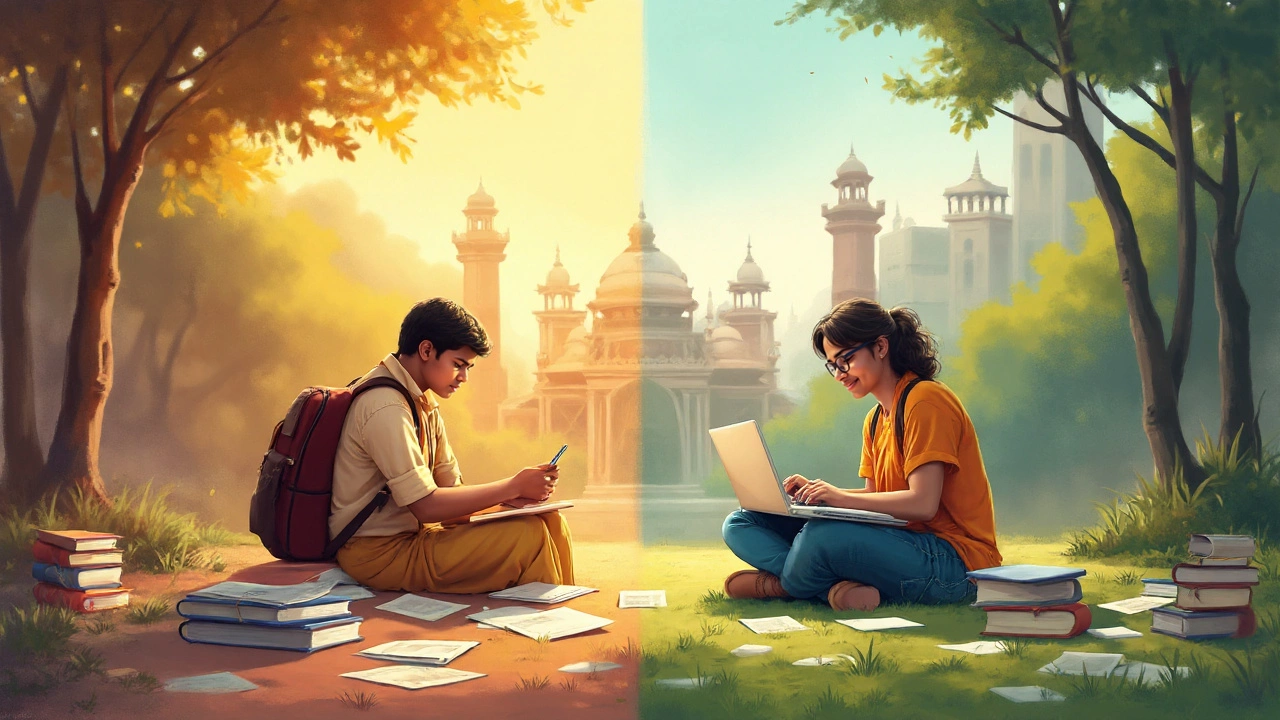
Shaping the Future: Which System Prepares You Better?
So, which system sets you up for success down the line? The answer’s not as simple as a yes-or-no. In India, the pressure to ace board exams and entrance tests builds discipline, resilience, and strong foundational knowledge—especially in STEM. No wonder CEOs of big tech firms like Sundar Pichai (Google) and Satya Nadella (Microsoft) started their journeys in Indian classrooms. But many still leave for college in the U.S., chasing flexibility and research opportunities they missed back home.
U.S. schools, on the other hand, tend to shape students who question, collaborate, and present themselves with confidence. Group projects, internships, and volunteering are part of daily life. Critical thinking and soft skills get as much airtime as calculus. Moving from school to college and then to the job market feels less terrifying, because you’ve already practiced navigating options and adapting to change.
Statistics tell the story:
| Metric | India | USA |
|---|---|---|
| Global University Rankings (Top 100, 2024) | 3 | 20 |
| PISA (Programme for International Student Assessment) Scores (2022, Math) | Index: 464 | Index: 487 |
| College Graduation Rate | 27% | 61% |
| Student-Teacher Ratio (Secondary) | 32:1 | 16:1 |
There are always exceptions. Some American students struggle with basic math; some Indian graduates breeze through global university admissions. If your goal is to become great at exams, India will transform you into a machine. If you want to explore ideas, build soft skills, and create things, the American way could feel like freedom.
But honestly? No system is perfect. Both countries have shining stars and glaring gaps. Your outcome depends a lot on what you want, your teachers, and frankly, a bit of luck—having the kind of support that pushes you through tough days and keeps you hooked on learning. Ask anyone who’s switched systems as an adult: the real advantage comes from seeing both worlds, picking what suits you, and not being afraid to question everything. Now, that’s an education worth having.
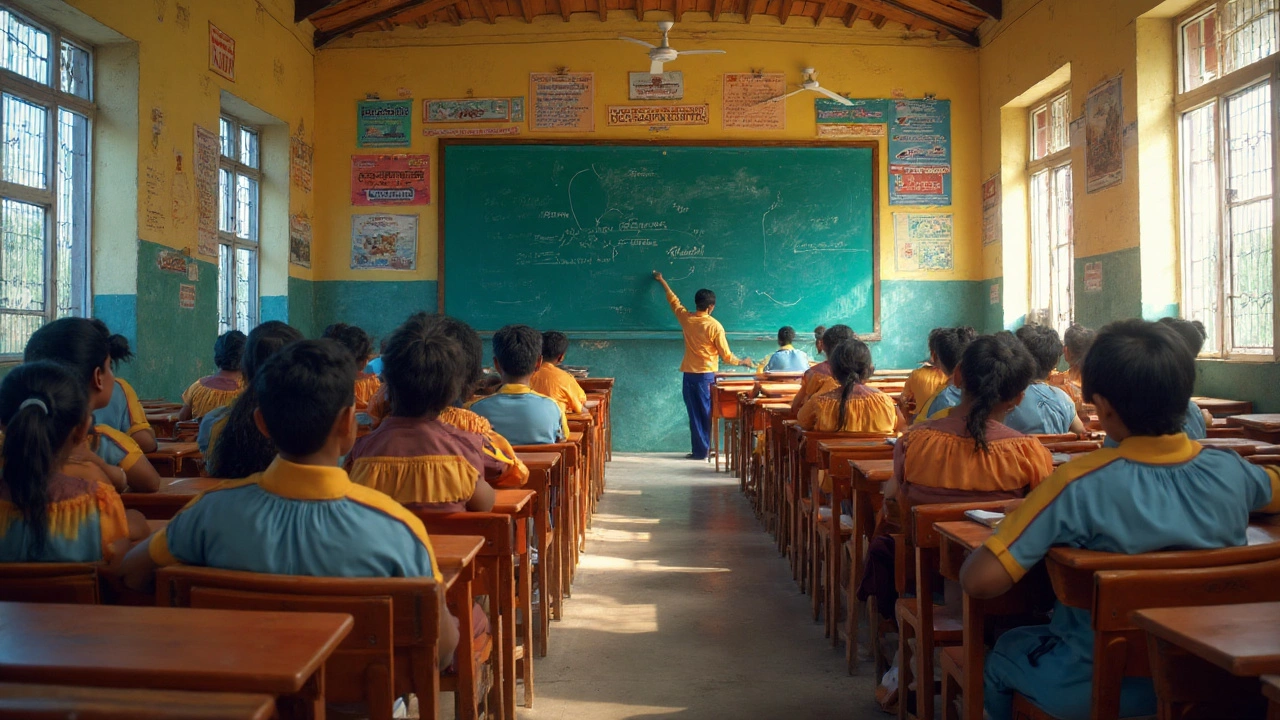

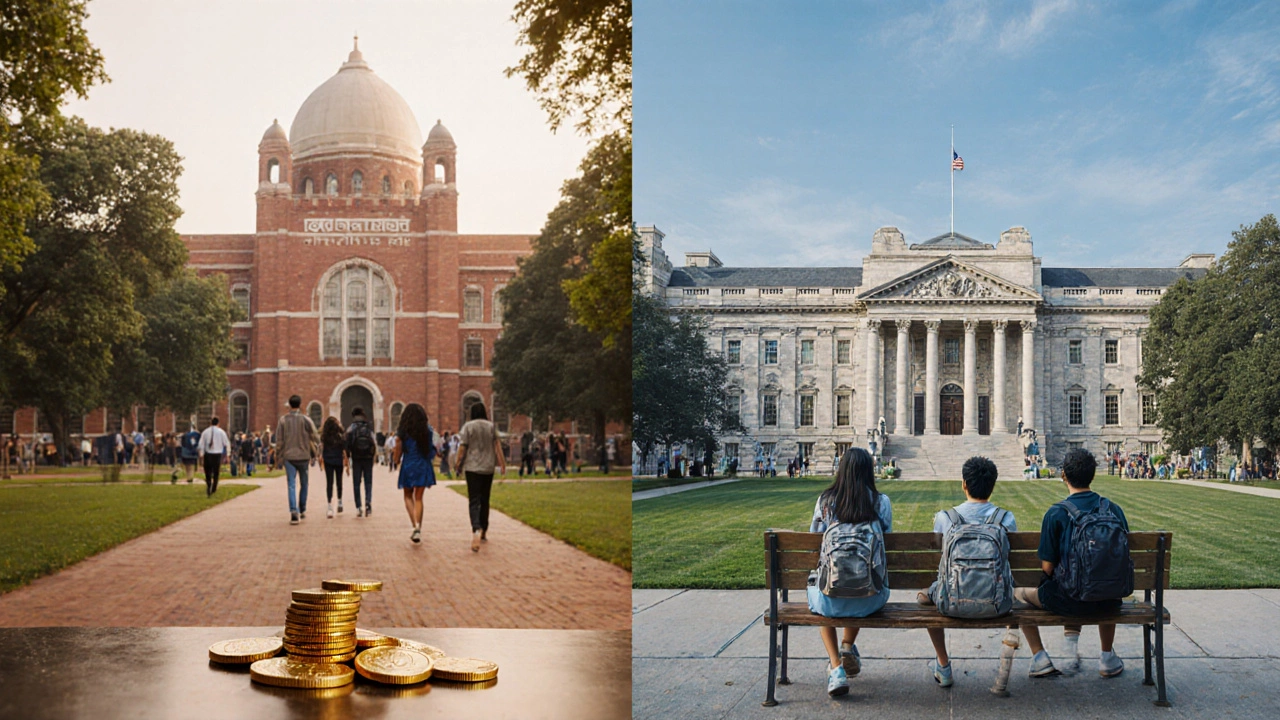
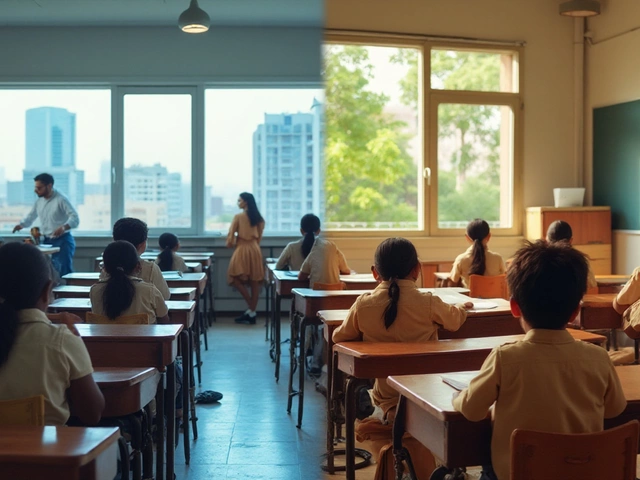

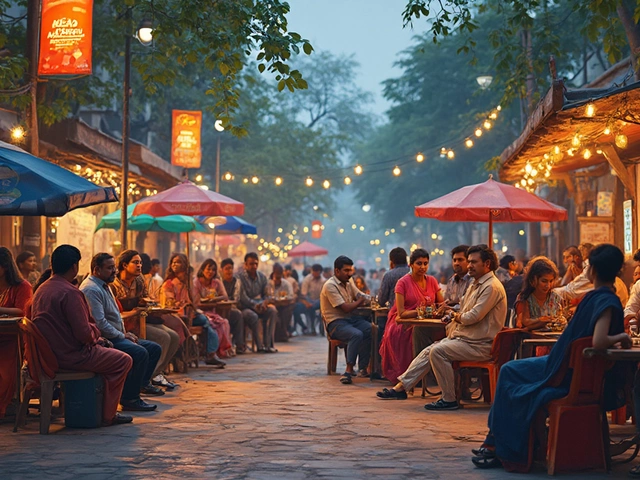
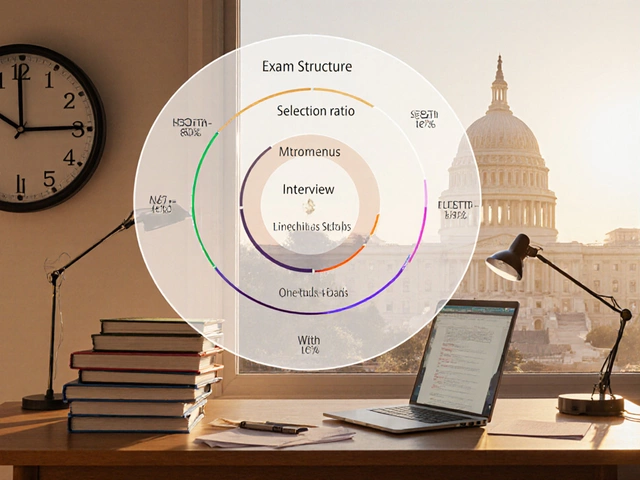
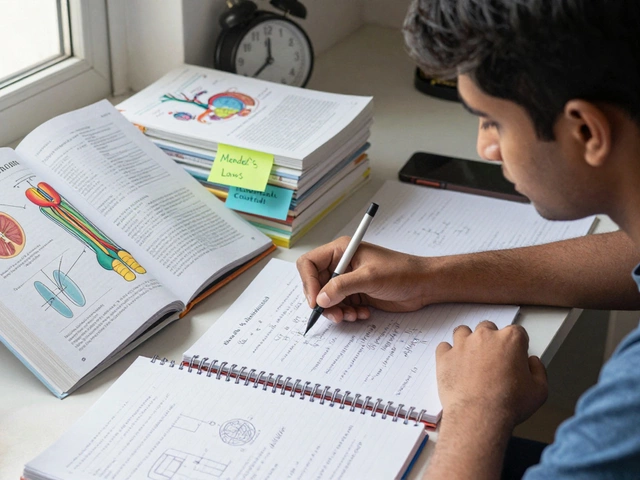
0 Comments